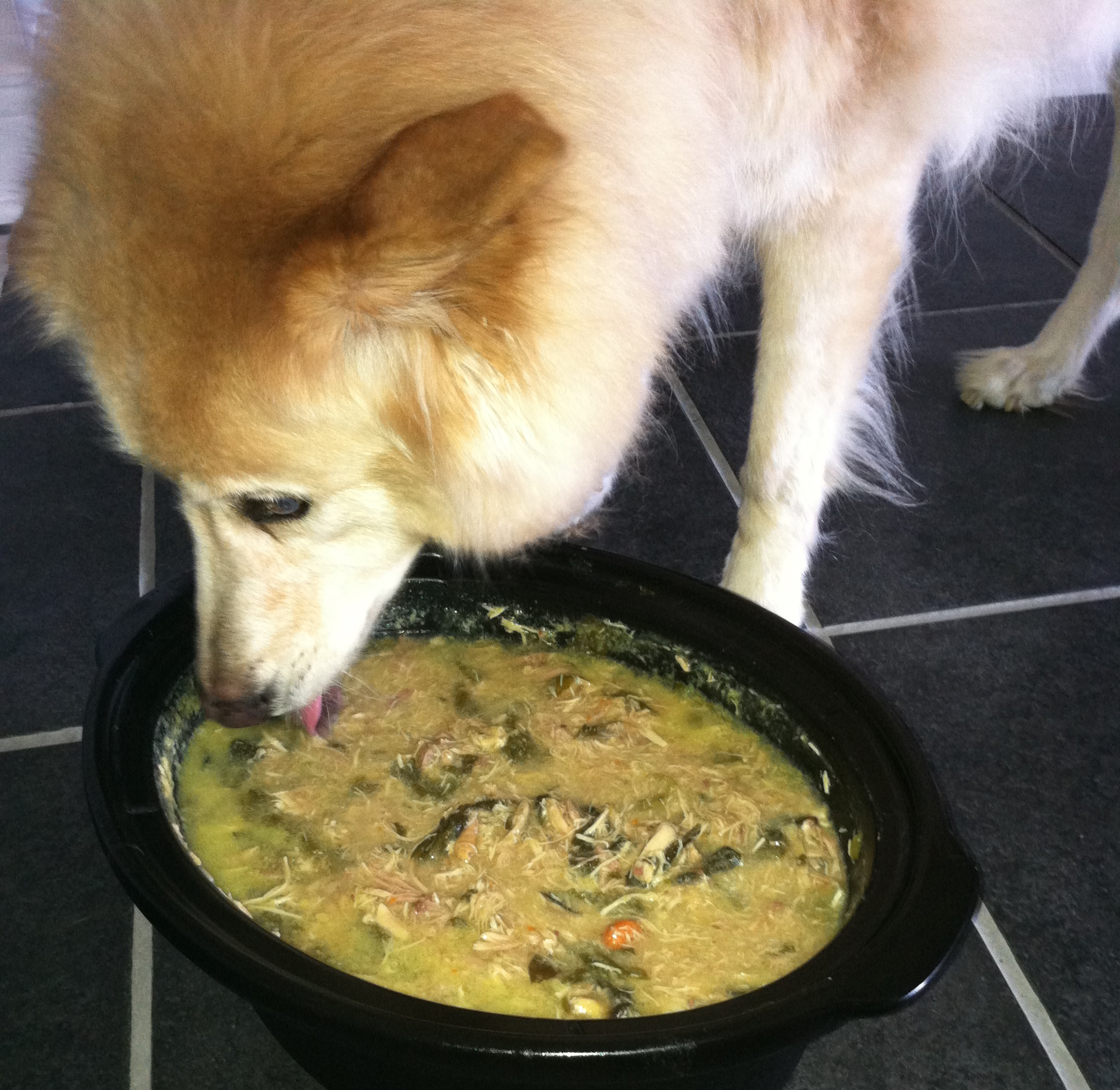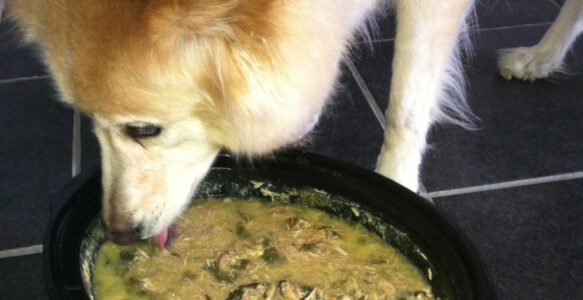I wrote this article many years ago, around 2007. My sidekick Cori passed away in 2017 at the age of 15 1/2, and her legacy and inspiration live on! Here are some grocery shopping tips to help make things easier. ~ Sarah
Grocery shopping is a regular ritual for all of us. As we navigate the aisles, sales and freebies, we can keep our dogs in mind and easily pick up ingredients for their diets too.
I spend lots of time in the produce department, and while I’m there I grab apples, broccoli, potatoes, yellow squash, carrots, zucchini, watermelon, salad fixings and more.
In the oil aisle, I load up on extra virgin olive oil, coconut oil and apple cider vinegar (with “the mother” of course).
Next come the canned goods — perfect for stocking up on canned herring steaks, sardines, salmon and chicken. Oats are in that aisle too, and I grab a container of that.
While I’m being tempted by frozen pizzas in the freezer aisle, I get a big bag of frozen green beans.
Add some eggs, Greek yogurt and cottage cheese to the cart, and I’m almost done.
Finally, the meat department…. Here, I buy a whole chicken, and whatever meats are on sale with good best-by dates.
Sharing Food With Your Dog
As I proceed through the checkout line, one thing is clear: a good deal of this stuff is for my dog, Cori. Can you tell which ingredients are for her, and which are for me?
It doesn’t really matter, because we share a lot of it. I might make her that whole chicken, in a pot with some carrots, zucchini, potatoes and broccoli, and we will both enjoy it.
And that’s the way it should be. After all, I want to know what goes into my dog’s body, and I want to make sure it’s high quality enough to be considered “fit for human consumption.” Making your own dog food is healthy and easy, once you learn the tricks of the trade.
I transitioned Cori over to homemade food about six years ago, and never looked back. It’s the only way I know for sure what she’s eating.
Aside from the health benefits, there’s the variety issue. Feeding a dog the same old boring food every day doesn’t offer him or her the wide range of nutrients that home cooking does. Starting slow and gradually adding new ingredients can help ensure your dog’s body gets used to things.
Next time you go to the grocery store, think about including your dog in your shopping considerations. Even if you pick up one new item a week for your pup, you can help him or her lead a healthier life by including whole foods in his or her diet.
Some dietary staples I feed Cori include:
- chicken, turkey and other poultry, ground beef
- organs
- fish, fresh or canned
- potatoes
- rice
- vegetables including asparagus, carrots, broccoli, frozen peas, squash and so many more
- fruits including apples, watermelon, blueberries and many others
- cottage cheese
- Greek yogurt
- eggs
- olive oil
- coconut oil
- unsalted butter
- ground roasted flaxseeds
- oatmeal
Stock up on sales when possible
These are just the beginning. Make a slow transition, gradually introduce new foods to your dog, shop wisely and frequently, stock up on sales, canned goods and frozen items, and before you know it, you and your dog will be on the road to home cooking.
Best wishes,
Sarah


